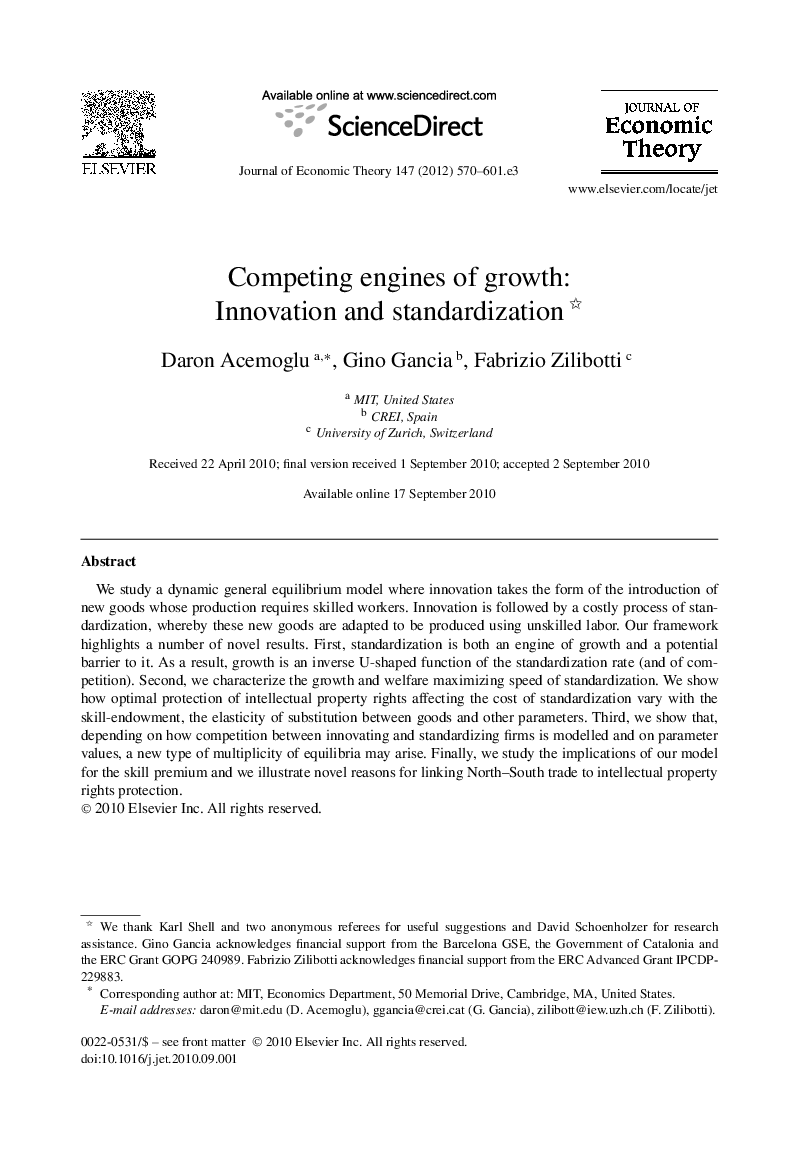| Article ID | Journal | Published Year | Pages | File Type |
|---|---|---|---|---|
| 956899 | Journal of Economic Theory | 2012 | 35 Pages |
Abstract
We study a dynamic general equilibrium model where innovation takes the form of the introduction of new goods whose production requires skilled workers. Innovation is followed by a costly process of standardization, whereby these new goods are adapted to be produced using unskilled labor. Our framework highlights a number of novel results. First, standardization is both an engine of growth and a potential barrier to it. As a result, growth is an inverse U-shaped function of the standardization rate (and of competition). Second, we characterize the growth and welfare maximizing speed of standardization. We show how optimal protection of intellectual property rights affecting the cost of standardization vary with the skill-endowment, the elasticity of substitution between goods and other parameters. Third, we show that, depending on how competition between innovating and standardizing firms is modelled and on parameter values, a new type of multiplicity of equilibria may arise. Finally, we study the implications of our model for the skill premium and we illustrate novel reasons for linking North-South trade to intellectual property rights protection.
Keywords
Related Topics
Social Sciences and Humanities
Economics, Econometrics and Finance
Economics and Econometrics
Authors
Daron Acemoglu, Gino Gancia, Fabrizio Zilibotti,
